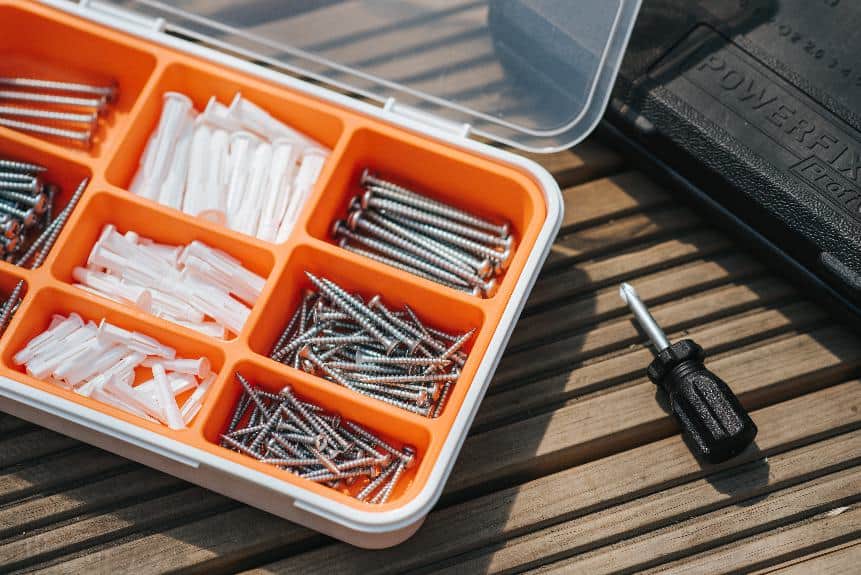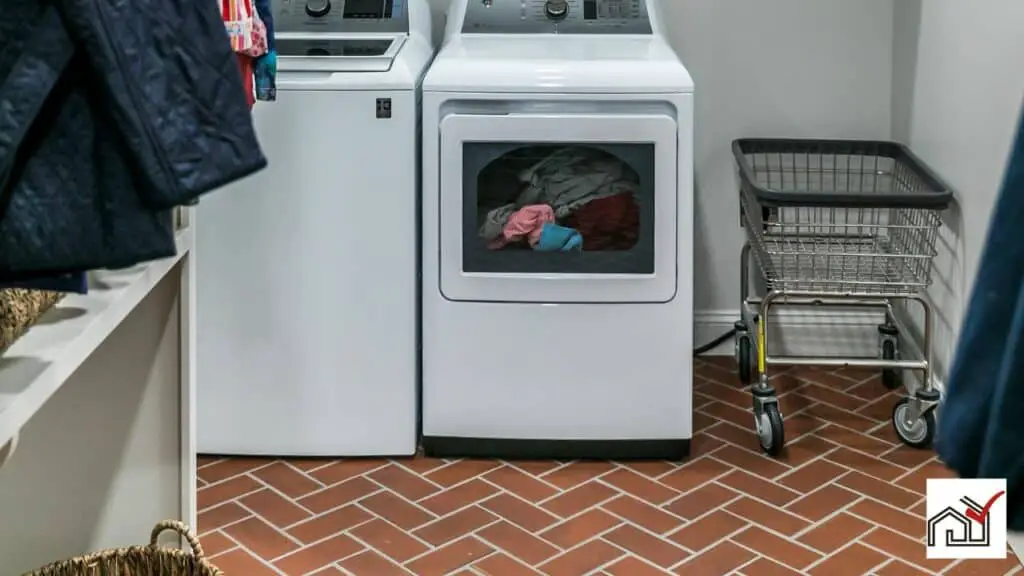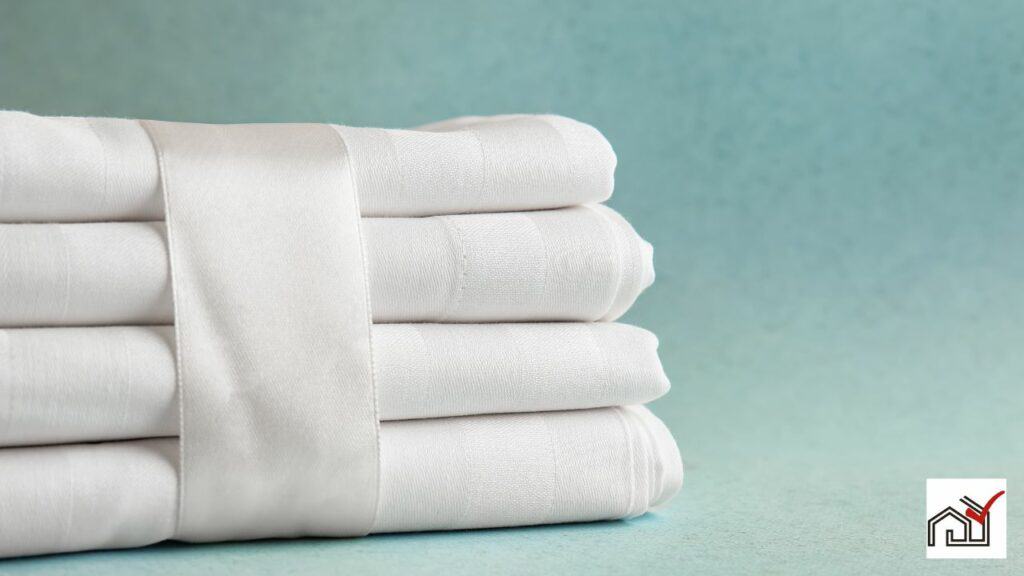To fix a squeaky box spring, follow these steps:
- Locate the squeak by checking for loose bolts or worn springs.
- Tighten any loose connections.
- Apply lubricant to areas that are making noise.
- If needed, add padding or inspect the wooden frame for any damage.
- Rearrange the bed to distribute weight evenly.
- If the squeak persists, consider replacing the box spring.
By following these instructions, you should be able to eliminate the noise and improve your bed's comfort and durability.
Identify the Squeak Source
To locate the source of a squeak in a box spring, conduct a thorough inspection by applying pressure to different areas and listening for the noise. Note where the squeak is coming from.
During the visual examination, check for loose screws and bolts, which can occur over time. Tighten any that you find with the appropriate tools. Also, inspect the wooden slats for wear or damage, such as fraying or splintering, which may cause noise.
Look for any gaps or misalignment between the mattress and box spring or between the slats and the frame. Correct these issues by padding with felt or adjusting the slats' position.
Tighten Loose Bolts
Inspect the box spring frame and tighten any loose bolts with a wrench. Regular use can cause bolts and screws to loosen, which may result in squeaking. Make sure all connections are secure for a silent, stable bed.
For metal frames, focus on the joints where pieces intersect and tighten any loose screws. If squeaking continues, add a washer for a tighter fit.
For wooden frames, tighten any loose bolts or screws. Avoid overtightening to prevent thread stripping or wood damage.
Regularly tightening bolts helps maintain your bed's integrity and eliminates squeaks, ensuring it provides proper support.
Lubricate the Springs
To stop a box spring from squeaking, there are a few steps you can take. First, lubricate the springs and pivot points with a non-staining lubricant like WD-40. Focus on all metal parts that might be causing noise.
For wooden box springs, a good solution is to use wood glue to secure the slats to the frame. This can help reduce sound and prevent squeaking.
If there's still noise after these steps, it's important to check for loose parts. Tighten or replace screws if necessary to ensure everything is secure.
It's also worth mentioning that maintaining your box spring and mattress is important for preventing noise and ensuring better sleep.
If you have bed bolts that are noisy, lubricating them with WD-40 can be a good solution.
However, if you've tried all of these steps and the squeaking continues, it may indicate the need for new springs. Proper lubrication often fixes the issue, but if that doesn't work, it might be time to consider replacing the springs.
Add Padding Material
Adding padding material such as dense foam or quilted fabric can reduce noise from a squeaky box spring. This cushioning acts as a buffer between the mattress and box spring, lessening the squeaking noise.
Introducing a soft barrier, like non-slip mats, old quilts, or furniture pads between the mattress and box spring absorbs vibrations and lessens sound. These can also prevent the mattress from sliding.
Carpet padding is another option, often not considered, that can be easily sized and placed on the box spring to absorb noise and reduce friction.
Furthermore, padding can protect floors from damage caused by the box spring. If a bed lacks proper support, furniture pads under the bed's legs or corners can help minimize noise from friction.
Using padding material can provide a quieter, more stable bed and may eliminate the need for immediate replacement of the mattress or box spring.
Inspect Wooden Frames
Inspect the box spring's wooden frame carefully to identify the cause of any squeaking. Wooden frames can loosen or wear over time, which may result in creaking noises. Look for damage such as cracks or broken boards. Areas prone to friction should be examined closely, as these commonly produce squeaks.
During the inspection, focus on the wooden slats and their connection to the frame. Replace any damaged components immediately to prevent further issues. If slats are in good condition but squeak due to friction with the cardboard lining, wood glue can secure the cardboard and minimize movement.
Fill cracks or gaps in the frame with wood filler or putty to reduce friction and squeaking. Ensure the filler is smooth after drying. Also, check for gaps between the box spring and the bed frame, which can cause tension and noise. Inserting cork or wax can relieve this tension and stop the squeaking.
Addressing these points will help maintain the bed frame's condition and quietness.
Adjust Bed Placement
Moving your bed can often reduce or stop squeaking caused by an uneven floor or a bed frame that isn't balanced.
First, check that the bed is on a level surface, as floors that aren't level can make the bed frame uneven, causing noise.
Inspect the bed frame legs to make sure they all rest evenly on the floor. If some legs are shorter, use caster cups under them to level the bed and support the mattress evenly. This can prevent strain on the box spring. For metal frames, ensure the joints are tight and the frame isn't wobbling.
If leveling the legs doesn't fix the squeaking, try repositioning the bed in the room to find a spot with more even flooring. If the entire floor is uneven, you may need to move the bed to another room with better flooring or fix the uneven floor.
As you adjust the bed, keep the frame aligned and tighten all parts. A balanced bed placement can lead to quieter sleep and longer-lasting box springs and mattresses.
Consider Box Spring Replacement
If your box spring still makes noise after you've secured all parts and adjusted its position, it might be time to get a new one. Persistent squeaking suggests internal damage that could be irreparable. While you can sometimes fix problems by tightening or padding, signs like broken slats or noticeable sagging typically mean you need a new box spring.
Over time, the materials in a box spring, like wood and coils, wear out, affecting support and noise level. Consider the box spring's age and condition when deciding on a replacement. An old box spring with visible wear might require replacing to ensure comfortable sleep.
Before purchasing a new box spring, consider visiting a hardware store or seeking advice from a mattress specialist. They can recommend a compatible replacement that fits your mattress size and type. A proper box spring is essential for mattress support.





